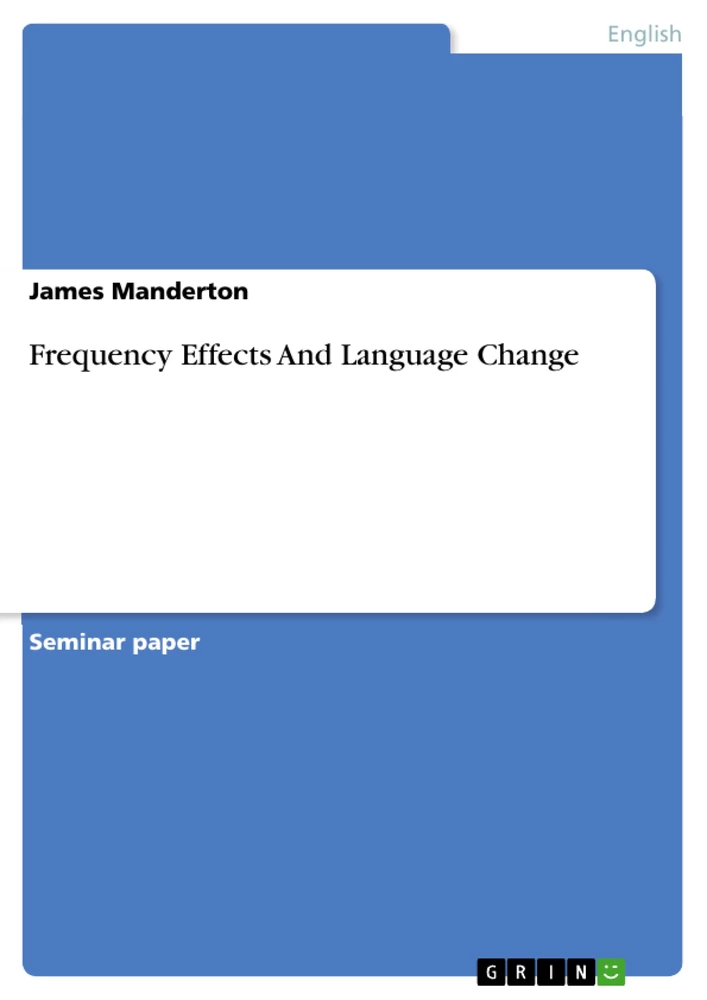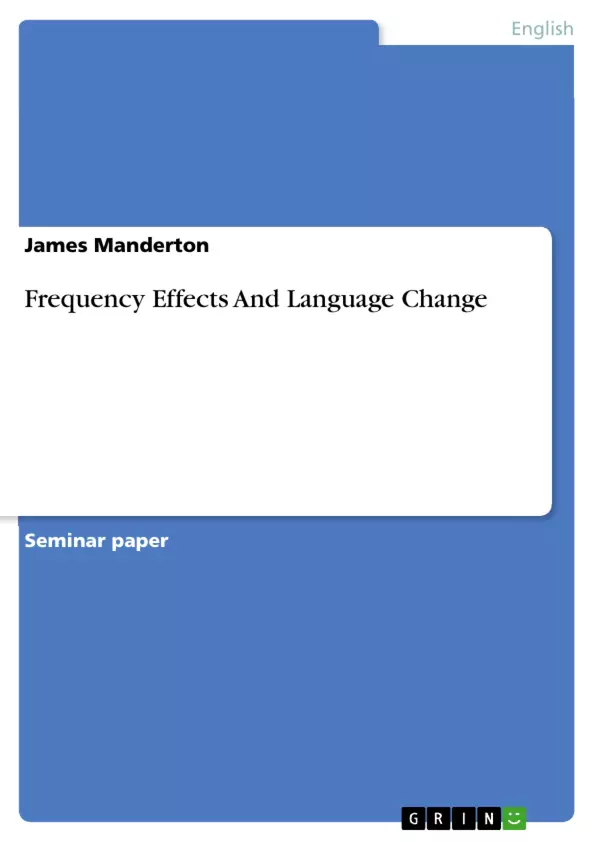Concise overview over different mechanisms in the sphere of Language change.
English is looking back onto a long and rich history of development. Being part of the Indo-European language family, the origins of the language could be argued to date back as much as 6000 years. However, most scholars seem to agree that the ‘true’, traceable genesis of English starts somewhere around the time of the Anglo-Saxon migration to the British Isles in in the fifth century CE. Thus, English can be understood as part of the Germanic language family tree. Today, only a relatively small part of the lexicon of English still reflects this beginning, as, over the course of many centuries, the language underwent a multitude of internally, externally and extra-linguistically motivated changes. Some followed major historical events such as the Norman Conquest in 1066 and the subsequently existing French influences or the Middle Ages and renaissance, which brought with them a great emphasis on Latin. While these mainly influenced the lexicon of English through loanwords, other developments, such as Sound Shifts (most notably the First Sound Shift, which is described by Grimm’s Law that illustrates the differences between Germanic and other Indo-European languages), or the transition from Old English as an inflectional language to Middle English becoming an isolating or analytic language, had lasting influences on every major linguistic field of English.
Inhaltsverzeichnis (Table of Contents)
- Introduction
- Mental Representations of Language
- Paradigms and other forms of organization
- Token vs Type frequency
- Frequency and Language Change
- Conservation
- Erosion
- Conclusion
Zielsetzung und Themenschwerpunkte (Objectives and Key Themes)
This paper delves into the relationship between language change and frequency, examining how frequency impacts language development. It focuses on how frequency, a key factor in psycholinguistics, influences the mental representation and organization of language, ultimately contributing to language change or its prevention.
- Mental representations of language and their organization in paradigms and exemplars
- The influence of token and type frequency on language
- The role of frequency in language change processes
- The connection between frequency and cognitive processes
- The application of frequency-based models to understanding language development
Zusammenfassung der Kapitel (Chapter Summaries)
The introduction outlines the historical context of English language development and emphasizes the importance of understanding language change, particularly from the perspective of frequency. It highlights the role of psycholinguistics in understanding the relationship between language and frequency.
Chapter 2 explores mental representations of language, focusing on the organization of words into paradigms and clusters. It examines the concept of exemplar theory, which suggests that words are stored as exemplars in the brain and retrieved and compared upon encountering new stimuli. This chapter also discusses the significance of frequency in the organization of these exemplars.
Schlüsselwörter (Keywords)
This paper focuses on the key concepts of frequency, language change, mental representation, paradigms, exemplar theory, token frequency, type frequency, psycholinguistics, and cognitive processes. The study examines how these factors contribute to understanding language development and the impact of frequency on its evolution.
- Citation du texte
- James Manderton (Auteur), 2022, Frequency Effects And Language Change, Munich, GRIN Verlag, https://www.grin.com/document/1443233



